Interview with Frank Jansen, product manager for confectionery processing as well as filling and capping equipment at Bosch Packaging Technology.
At ProSweets Cologne 2018, Makat Candy Technology, part of Bosch Packaging Technology, for the first time presented its starchless depositing method for the production of pure gelatine gummies in silicone moulds. Frank Jansen, product manager for confectionery processing as well as filling and capping equipment at Bosch Packaging Technology, provides information on the new method.
sweets processing: Mr Jansen, what are the most important trends in confectionery production?
Frank Jansen: We have identified growth opportunities for various product groups. According to research conducted by Allied Market Research, the global market for nutraceuticals will reach 302 billion dollars by 2022 – with an annual growth rate of seven percent. A strong and attractive market – especially for the confectionery industry. Nowadays, almost 14 percent of all vitamins and nutraceutical supplements are processed into candy. Furthermore, Transparency Market Research predicts that the global market for vitamin gummies alone will grow by five percent annually over the next eight years and exceed four billion dollars in 2025. Interestingly, in 2015 over-the-counter products (OTC products), such as cough sweets, accounted for 63 percent of pharmaceutical sales in India, 55 percent in China, and approximately eleven percent in the USA. And that’s a rising trend.
sp: Which new manufacturing processes address these trends?
Jansen: Starchless depositing for gelatine products is one of the hottest topics in the industry right now, along with the new procedure of “Candy 2 Gum”, deposited chewing gum. Starchless depositing has been a standard procedure for hard candy for many years. From now on, with the help of silicone moulds, even pure gelatine gummies can be deposited without starch. This manufacturing process is particularly interesting for manufacturers of nutraceutical or OTC products.
sp: So, what is starchless depositing?
Jansen: With starchless depositing, jelly products can now be deposited using silicone moulds instead of the conventional starch depositing.
sp: How does this work exactly?
Jansen: Conventional starch depositing required manufacturers to use mogul plants. To facilitate starchless depositing of gelatine gummies, we enhanced our Silicone Rubber Mould (SRM) plant. As a first step, the silicone moulds are moistened using a release agent. Then, the jelly mass is deposited into the moulds. Next, the filled moulds enter the SRM’s integrated cooling tower. At no point throughout the process, the moulds need to be taken out of the plant. The products can be demoulded after a cooling time of 20 minutes only. The empty moulds are returned to the depositing station and are filled once again.
This is the first advantage: the moulds stay in the plant and no longer need to leave the production cycle for
cooling.
sp: How so?
Jansen: Our main advantage at Bosch is that we can use commercial gelatine for the jelly mass production. We optimised the depositing head design for this application and are now able to deposit jelly masses with a high dry matter content. Manufacturers can now use commercial, high-bloom gelatine in production, without tailing. The jelly mass hardens within 20 minutes in the plant itself. Consequently, the products no longer have to be stored in a drying room, which is a huge advantage for manufacturers.
sp: Why is this such a big advantage?
Jansen: Conventional jelly production requires the filled starch trays to rest for 24 to 72 hours in a drying room. During this time, starch withdraws water from the products, which solidifies them. This gives the final product a dry matter content of 84 to 86 percent. With starchless depositing, you can deposit a jelly mass that has this dry matter final content from the beginning. The drying room can be eliminated from the production site entirely, which reduces energy costs and minimises production time. This also means that you need less floor space in the production facility. This has highly positive impacts on Overall Equipment Effectiveness (OEE).
sp: Does the elimination of starch contribute by cutting costs?
Jansen: Absolutely. We replace tens of thousands of starch trays with a few hundred, reusable silicone moulds. With filling speeds of up to 30 moulds per minute, combined with a cycle duration of 20 minutes, approximately 600 silicone moulds are needed in production. The new production method does away with powder treatment, so we also help to cut back on energy and personnel expenses. Equipment costs are lower, and there is no need for drying rooms. The high speed of the Bosch machinery, which can fill up to 30 moulds per minute, is yet another advantage. By the way: format changes only take one hour, which saves additional time and costs.
sp: Who is the starchless depositing meant for?
Jansen: In general, it was designed for manufacturers of high-quality products with defined shapes in high quantities. As the silicone forms determine the product shape, form variety is limited. Silicone moulds are not suitable for delicate product contours, because the jellies could get damaged when being pressed out of the mould. However, starchless depositing is an ideal manufacturing method for all other products: from standard sweets and vitaminenriched jellies to semi-pharmaceutical products.
sp: What about the rest of the process? How can Bosch provide additional support for manufacturers?
Jansen: Besides the manufacturing method itself, we offer our clients tailor-made single-source solutions, comprehensive advisory services and customer care. Our broad portfolio ranges from the kitchen – which was adapted for this process – to the casting machinery and the primary packaging to the cartoner. Customers can even test and refine recipes in our in-house laboratory.
sp: Concerning starchless depositing: what will the future bring?
Jansen: We feel that starchless depositing will quickly establish itself on the market because of its numerous benefits, such as reducing production times, and reducing energy and machine costs by eliminating starch treatment and drying room. However, the biggest advantage for manufacturers is that they can deposit using commercial gelatine. At trade fair ProSweets, we received a very good feedback from visitors. Established manufacturers and new players on the market were eager to learn more about this innovative production method.





